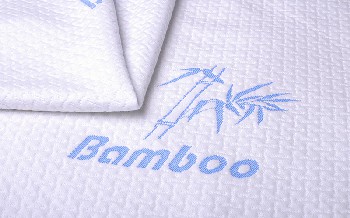Knitting involves the use of needles to loop yarn together, creating rows of interconnected loops. There are various knitting techniques, including flat knitting and circular knitting, each producing fabrics with distinct characteristics. Circular knitting, for instance, creates seamless tubes, eliminating the need for many seams and enhancing both comfort and durability.
When it comes to comfort, knitted fabrics shine. Their elasticity allows them to conform to the body's contours, providing a snug fit without restricting movement. This makes them ideal for activewear, loungewear, and undergarments. The breathability of knitted fabrics also contributes to comfort by allowing air circulation and moisture evaporation, reducing the risk of discomfort and skin irritation.
Durability: A Key Attribute of Knitted Fabrics
Knitted fabrics aren't just about comfort; they're also incredibly durable. The interlocking loops create a structure that can withstand stretching, making them resistant to tears and abrasions. Additionally, modern knitting techniques incorporate reinforced stitching, enhancing the fabric's strength. This durability ensures that knitted garments remain in good condition even with frequent wear and washing.
Blending Fashion and Functionality
One of the most remarkable aspects of knitted fabrics is their ability to seamlessly blend fashion and functionality. Designers can create intricate patterns, textures, and designs using knitting techniques, allowing for endless possibilities in garment design. This fusion of aesthetics and practicality makes knitted fabrics a favorite choice among fashion enthusiasts and everyday consumers alike.

Several factors contribute to the overall comfort of knitted fabrics:
Fabric Type and Composition
The type of yarn used and the composition of the fabric play a crucial role in determining its comfort. Natural fibers like cotton, bamboo, and wool offer breathability and softness, while synthetic fibers like polyester can enhance moisture-wicking properties.
Stitch Construction
The way stitches are constructed influences how the fabric feels against the skin. Some stitches are smoother, while others create textures. Designers carefully choose stitch patterns to achieve the desired level of comfort.
Breathability and Moisture Management
Knitted fabrics with good breathability and moisture management properties keep the body dry and comfortable, making them suitable for both active and casual wear.
Stretch and Flexibility
The stretchiness and flexibility of knitted fabrics contribute to their comfort. This elasticity allows for a wider range of movement without feeling constricted.
Manufacturers employ various techniques to enhance the durability of knitted fabrics:
Pilling Resistance
Pilling, the formation of tiny balls of fiber on the fabric surface, can affect comfort. Innovative yarn blends and finishing processes help minimize pilling, ensuring the fabric maintains its smooth texture.
Seam Strength
Seams are potential weak points in any fabric. Advanced knitting techniques produce seamless garments that eliminate traditional seams, enhancing both comfort and durability.
Shape Retention
Knitted fabrics are known for their ability to retain their shape even after repeated stretching and wearing. This attribute ensures that garments look and feel good for an extended period.

Proper care and maintenance are essential for prolonging the life of knitted garments. Following care instructions, such as gentle washing and proper storage, can prevent stretching, pilling, and other forms of wear and tear.
Sustainability in Knitted Fabrics
The fashion industry's increasing focus on sustainability extends to knitted fabrics:
Eco-Friendly Materials
Many brands now offer knitted fabrics made from organic and recycled materials, reducing the environmental impact of fashion production.
Reduced Waste
Knitting techniques can be highly efficient, resulting in minimal fabric waste during the production process.
Different types of knitted fabrics cater to various needs:
Sportswear and Activewear
Knitted fabrics with moisture-wicking properties and stretch are ideal for sportswear, providing comfort and performance.
Casual Everyday Clothing
Soft, breathable knitted fabrics are perfect for everyday clothing, offering both style and comfort.
Intimate Apparel
Knitted fabrics provide a comfortable and supportive option for intimate apparel, ensuring a snug fit and all-day comfort.
Knitted Fabrics in Home Furnishing
The comfort and durability of knitted fabrics extend beyond clothing, making them a popular choice for home furnishing items like blankets and throws.
Knitted fabrics have become a staple on fashion runways, showcasing their versatility in creating both casual and haute couture designs.
As technology advances, so does the innovation in knitted fabrics. 3D knitting and smart textiles are paving the way for even more comfortable, functional, and sustainable designs.
Hangzhou Xiaoshan Rongli Clothing Co., Ltd, established in 1989, is a company specialized in producing kinds of decoration fabric. With total area of 100,000 square meters.
You can contact us to inquire about Knitted Fabrics
Related news
About The Size Of Mattress Fabric
2023-08-14
If you are looking for a new mattress fabric, We are great places to start your search. Both sites offer a wide variety of fabrics to choose from, as well as comprehensive sorting and sales priority options.
How to Repair Mattress Fabric
2023-08-14
If you are looking for a new mattress fabric, Taobao Overseas and Suning.com are both great places to start your search. Both sites offer a wide variety of products, sorting options, and sales priorities to help you find the perfect mattress fabric for your needs.
About China Mattress Fabric
2023-08-14
China mattress fabric is one of the most popular fabrics in the world. It is used in a variety of products, including mattresses, furniture, and clothing. China mattress fabric is known for its durability and comfort. It is also available in a variety of colors and patterns.
Why Fabric Throw Pillows Are Loved By Many Consumers
2023-08-14
Fabric throw pillows are loved by many consumers for their versatility and comfort. They come in a wide range of textures, colors and patterns to suit any decor.